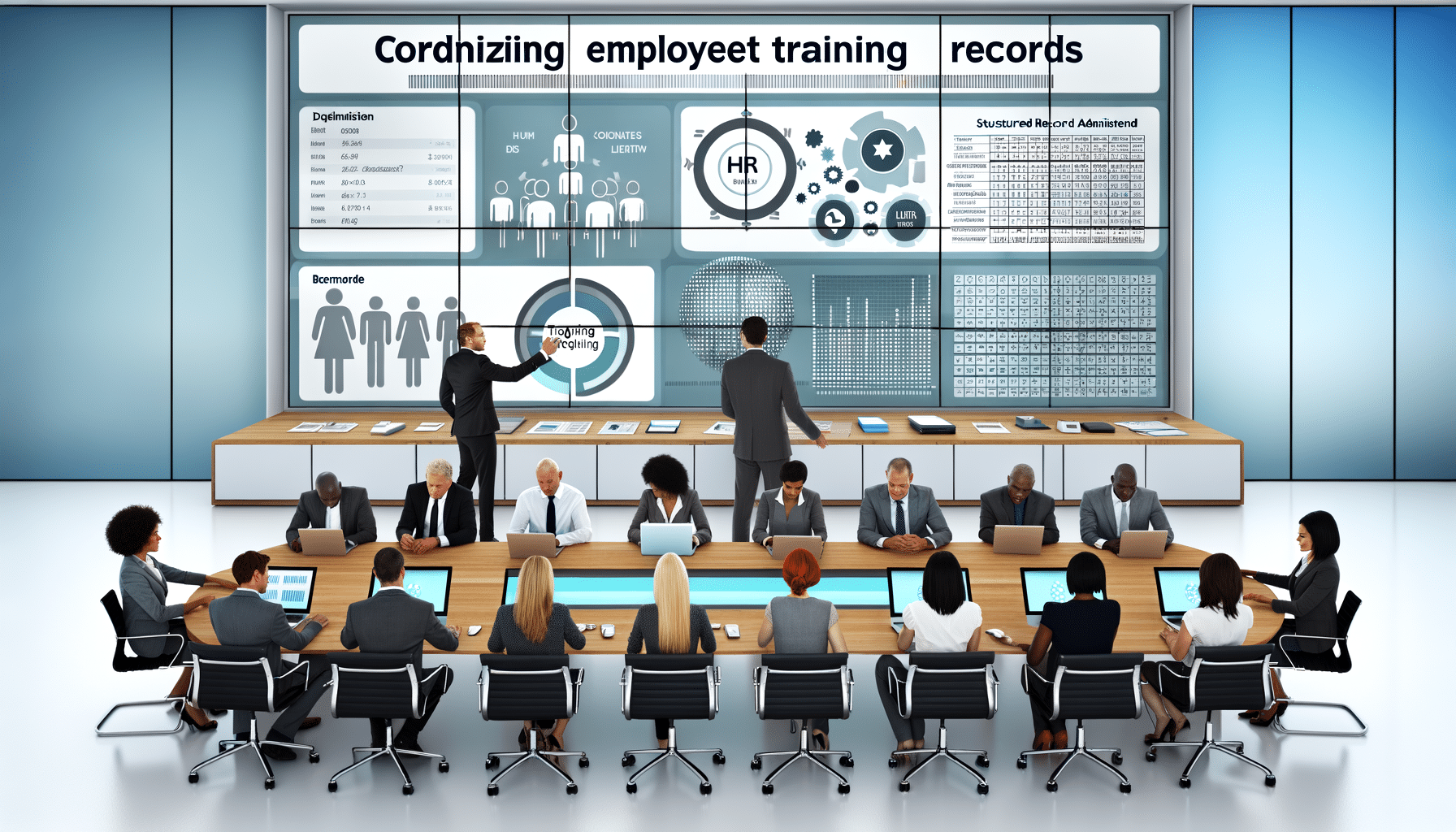- Data Synchronization
- November 17, 2024
Organizing Employee Training Records

Introduction
Managing employee training documentation can be a daunting task. If you’ve found yourself buried under stacks of papers or lost in a digital maze, you’re not alone. Training records are essential for tracking employee development and ensuring compliance, yet many organizations struggle to organize them efficiently. This is where the right strategies come into play. Allow me to guide you through techniques that can transform how you handle training records, ultimately benefiting your organization’s HR operations.
Why Are Training Records Important?
As we venture through the digital age, the role of training records has taken on newfound significance. For HR professionals like myself, these records are not just about compliance. They serve as the backbone for employee development, ensuring that skills remain relevant and up-to-date. With each entry, an opportunity unfolds to analyze progress, tailor strategies, and forecast future needs. However, if mismanaged, training records can morph into a labyrinthine nightmare, causing delays, compliance risks, and inefficiencies.
Common Challenges in Managing Training Records
Understanding the typical pitfalls is the first step towards effective organization. Over the years, I’ve identified several common issues that HR departments face:
- Data Silos: Many organizations struggle with fragmented systems that fail to integrate training information across departments.
- Inconsistent Record-Keeping: Differing methods and standards can result in incomplete or mismatched records.
- Accessibility Issues: Lack of centralized access to training information can slow down decision-making processes.
- Security Concerns: Safeguarding sensitive data against unauthorized access is a paramount concern in order to maintain trust and compliance.
Each challenge, if left unchecked, can lead to a host of downstream consequences, impacting employee sentiment, organizational transparency, and regulatory compliances.
Leveraging AI to Revolutionize Record Management
It’s time to look beyond traditional methods. Implementing advanced solutions like RecordsKeeper.AI is revolutionary for HR departments aiming to heighten their organizational strategies. Here’s why:
- Automated Categorization: AI-driven tools help in automatically categorizing and tagging training records, allowing for an effortless search and retrieval process.
- Real-Time Updates: Get the latest data on employee training progression, with every modification logged and auditable for transparency.
- Secure Access: Utilize secure data rooms that offer controlled access while maintaining an audit log to document interactions with these records.
- Regulatory Assurance: Ensure compliance with industry standards such as GDPR and HIPAA through automated regulatory workflows.
Embracing AI empowers HR departments to refocus their resources from mundane record-keeping to strategic initiatives like employee engagement and development.
Implementing a Best Practice Framework
Having catalyzed numerous digital transitions, I find that establishing foundational best practices is indispensable. Here’s how you can implement a structured framework for managing training records:
1. Set Standardized Procedures: Develop a consistent approach to recording training data. Utilize templates and shared guidelines to ensure uniformity.
2. Centralize Record Storage: Consolidate all training documentation into a single, easily accessible platform. This promotes better visibility and reduces the risk of data loss.
3. Regular Audits and Updates: Schedule periodic reviews of training records, examining for accuracy, completeness, and compliance with current regulations.
4. Enhance User Engagement: Educate employees and managers alike on the importance of record management. Cultivating awareness reinforces adherence to protocols and encourages proactive participation.
Following these best practices not only streamlines documentation but also contributes to a culture of continuous improvement.
The Transformative Future of HR Record Management
As we draw to a close, recognize that organizing employee training records systematically is not just an exercise in compliance—it’s a strategic imperative. By channeling your efforts as described, you can unlock a new echelon of HR excellence.
With RecordsKeeper.AI at your side, the future of record management is bright. Cumbersome paper trails and convoluted databases will soon be relegated to the past, replaced by sleek, intelligent systems designed to bolster productivity, compliance, and innovation.
Conclusion
In a world where employee development is paramount, effective record management takes precedence. My hope is that you’ve found value in the insights shared, and I encourage you to continue exploring how advancements like RecordsKeeper.AI can be leveraged to propel your HR department into the future. For more insights and to keep updated with transformative HR solutions, follow my journey with RecordsKeeper.AI and see how you can enhance your professional landscape.
Toshendra Sharma is the visionary founder and CEO of RecordsKeeper.AI, spearheading the fusion of AI and blockchain to redefine enterprise record management. With a groundbreaking approach to solving complex business challenges, Toshendra combines deep expertise in blockchain and artificial intelligence with an acute understanding of enterprise compliance and security needs.
Related Posts


Setting Up New Employee Record Access
Establishing record access for new staff members.
- January 2, 2025
Archives
- January 2025
- December 2024
- November 2024
- October 2024
- September 2024
- August 2024
- July 2024
- June 2024
- May 2024
- April 2024
- March 2024
- February 2024
- January 2024
- December 2023
- November 2023
- October 2023
- September 2023
- August 2023
- July 2023
- June 2023
- May 2023
- April 2023
- March 2023
- February 2023
- January 2023
- December 2022
- November 2022
- October 2022
- September 2022
Want to get more content like this?
Signup to directly get this type of content to your inbox!!
Latest Post
Document Control for Equipment Maintenance
- January 20, 2025
Managing Records for Multiple Clients
- January 19, 2025
Handling Conference Documentation
- January 18, 2025
Setting Up Department Record Reviews
- January 17, 2025





